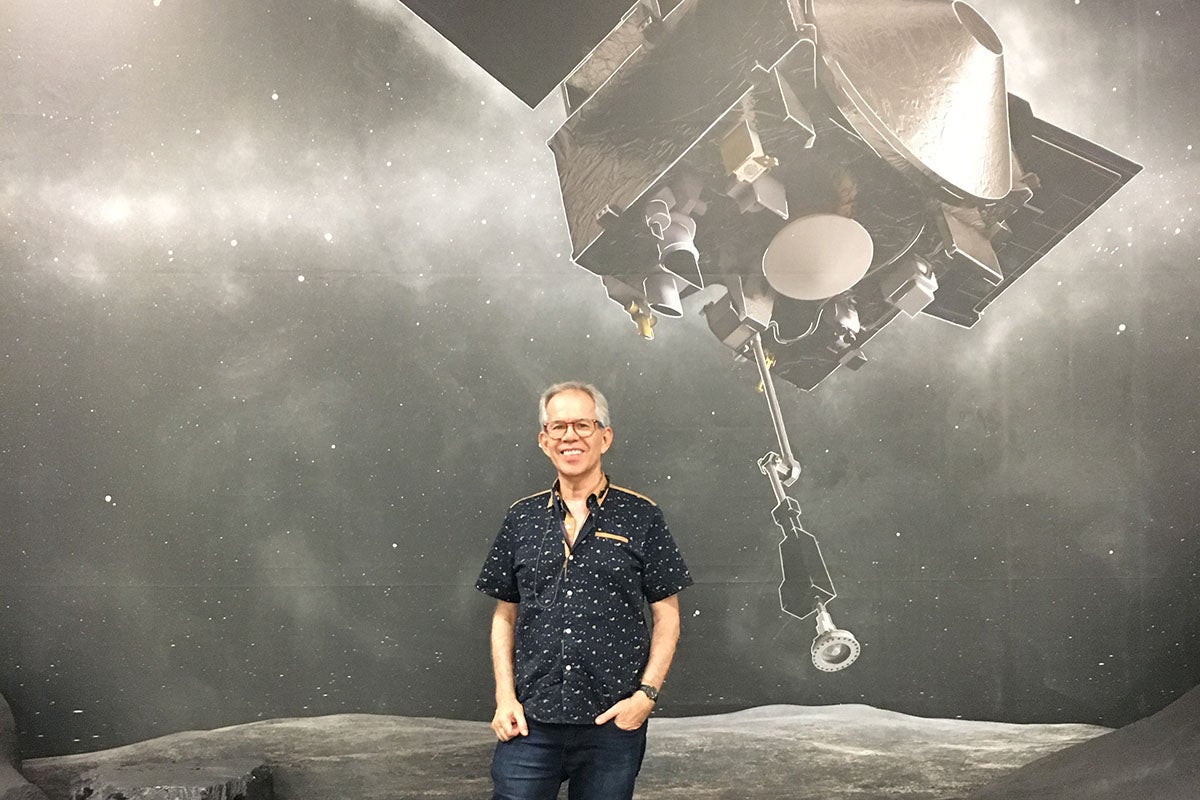Updated Oct. 29 at 6:50 p.m.
It’s been a busy day for UCF physics Professor Humberto Campins and the rest of the OSIRIS-REx mission team.
Campins gave the science community an update about at the evolving NASA mission to collect an sample from asteroid Bennu and return it to earth. About 2 p.m. he addressed astronomers and other scientists from around the world who are attending the 52nd annual Division of Planetary Sciences meeting that concludes Friday. Most years, scientists travel to attend the conference and get the latest on developments in their field. Because of COVID-19 organizers shifted to a virtual event this week.
Campins, a member of the NASA mission, shared some new findings with the group, specifically that some of the early images from Bennu suggest that there may be remnants of other asteroids on its surface. In September, the team published a Nature Astronomy article that detailed the discovery of asteroid Vesta remnants on Bennu. Daniella DellaGiustina of the Lunar and Planetary Laboratory at the University of Arizona, Tucson, was the lead author and Campins was a co-author. Campins explained that as the team continues to study images from the ongoing mission they’ve found evidence that there’s even more diversity on Bennu’s surface. It’s another surprise, Campins said. The mission has faced many unexpected circumstances that have caused it to adapt, including it’s touch-and-go maneuver, which was executed last week.
But Campins was only delivering one of the day’s updates about the mission. About 4 p.m. NASA held a virtual press conference via NASA TV to announce more good news.
Last week the OSIRIS-REx spacecraft executed a complicated touch-and-go maneuver during which a robotic arm unfurled and touched the surfaced of asteroid Bennu more than 200 million miles away from earth. The arm collected a sample from the asteroid’s surface, which it is scheduled to bring back to Earth in September 2023.
NASA today announced the team had successfully stowed the spacecraft’s Sample Return Capsule (SRC) and its abundant sample of asteroid Bennu on Wednesday, well ahead of schedule. According to the NASA briefing, “the stowage process, originally scheduled to begin in early November, was expedited when the mission team received images that showed the spacecraft’s collector head overflowing with material.”
Mission principal investigator Dante Lauretta, from the University of Arizona, explained that images taken during the maneuver indicated that the spacecraft collected well over 2 ounces (60 grams) of Bennu’s surface material, and that some of these particles appeared to be slowly escaping from the head. A mylar flap designed to keep the sample inside the head appeared to be wedged open. Lauretta said they wanted to make sure to secure the sample and prevent further loss, so a decision was made to accelerate the stowage process.
The team, including the project lead at Lockheed Martin Space in Littleton, Colorado, spent the 36 hours completing the storage of the sample and are now turning to making preparations to bring the sample home.
Campins, a member of the OSIRIS REx team that advised about where best to collect the sample, said he’s thrilled to know the sample is now secure.
The team continues to study the images and is looking forward to next phase of the mission. Now it’s all about getting the sample home, Dante said.
The material collected, once studied, may shed more light on how the asteroid and our solar system formed.





